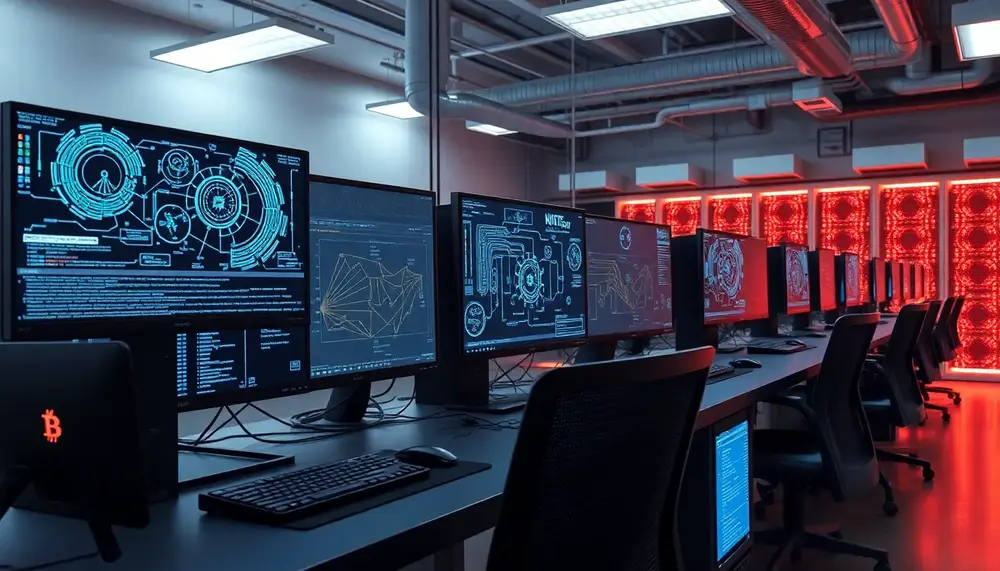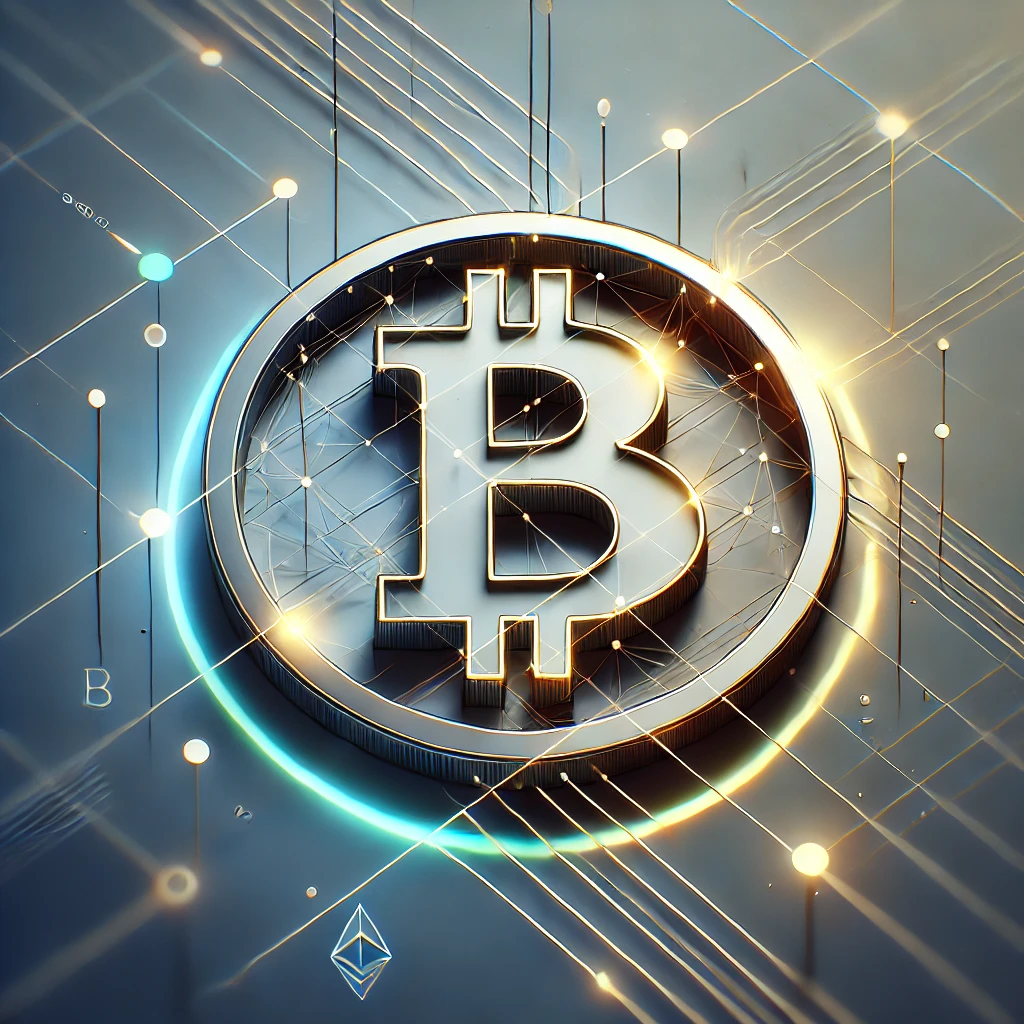Table of Contents:
Introduction to Bitcoin Mining
Bitcoin mining might sound like digging for digital gold, but it's a bit more complex than that. At its core, it's the process of verifying transactions on the Bitcoin network. This ensures the integrity and security of the blockchain, which is the technology behind Bitcoin.
Think of it as a giant digital ledger. Every time someone sends or receives Bitcoin, that transaction needs to be verified and recorded. Miners are the ones who do this job. They use powerful computers to solve complex mathematical puzzles. When they solve these puzzles, they add a new block of transactions to the blockchain.
The Best Mining Providers at a Glance
» Infinity HashFrom our perspective, currently the best mining provider on the market. With the community concept, you participate in a mining pool completely managed by professionals. A portion of the earnings are used for expansion and maintenance. We've never seen this solved as cleanly anywhere else.
» Hashing24A well-known and established cloud hosting company. With a good entry point and in a good market phase, a good ROI can also be generated with some patience. Unfortunately, we see the durations as a major drawback.
But why do they do it? Well, miners are rewarded with new Bitcoins for their efforts. This is how new Bitcoins are introduced into circulation. It's a system that not only secures the network but also incentivizes people to participate in maintaining it.
The Process of Bitcoin Mining
The process of Bitcoin mining involves several key steps that ensure the smooth operation of the network. Here's a simple breakdown:
- Transaction Collection: Miners gather transactions from the Bitcoin network. These transactions are unconfirmed and waiting to be added to the blockchain.
- Block Formation: Miners organize these transactions into a block. A block is like a page in the Bitcoin ledger, containing multiple transactions.
- Hashing: Each block must be hashed. A hash is a unique string of numbers and letters that represents the data in the block. It's generated using a cryptographic algorithm.
- Nonce Guessing: Miners compete to find a nonce, a random number that, when combined with the block's data, produces a hash that meets specific criteria. This step requires immense computational power.
- Validation: Once a miner finds the correct nonce, the block is validated by other miners. If the block is valid, it's added to the blockchain.
- Reward: The successful miner receives a reward in the form of new Bitcoins, plus any transaction fees from the transactions included in the block.
This entire process is repeated approximately every 10 minutes, ensuring the network remains secure and up-to-date. The difficulty of the puzzles adjusts over time, maintaining a consistent block creation rate.
Rewards and Incentives
Bitcoin mining isn't just a technical process; it's also driven by rewards and incentives that motivate miners to keep the network running smoothly. Here's how it works:
- Block Reward: Each time a miner successfully adds a block to the blockchain, they receive a block reward. This reward consists of newly minted Bitcoins. Initially, this reward was 50 Bitcoins per block, but it halves approximately every four years in an event known as "halving."
- Transaction Fees: In addition to the block reward, miners earn transaction fees. These fees are paid by users who want their transactions to be processed quickly. As the block reward decreases over time, transaction fees become a more significant part of miners' earnings.
- Economic Incentive: The combination of block rewards and transaction fees creates a strong economic incentive for miners. It encourages them to invest in powerful hardware and electricity to compete in the mining process.
These incentives ensure that miners continue to support the network, even as the total supply of Bitcoin approaches its limit of 21 million coins. As block rewards decrease, transaction fees are expected to play a larger role in sustaining the mining ecosystem.
Technical Requirements for Mining
Bitcoin mining isn't something you can do on your average home computer. It requires specialized equipment and a few technical considerations to be effective. Here's what you need to know:
- Hardware: The most critical component is the mining hardware. Initially, miners used regular CPUs, but as the difficulty increased, they moved to GPUs and eventually to ASICs (Application-Specific Integrated Circuits). ASICs are custom-built for mining and offer the best performance.
- Electricity: Mining is energy-intensive. The hardware consumes a lot of power, so having access to cheap electricity is crucial. Miners often set up operations in regions with low energy costs to maximize profitability.
- Cooling: All that computing power generates heat. Proper cooling systems are necessary to prevent hardware from overheating and to maintain efficiency.
- Software: Miners need specialized software to connect their hardware to the Bitcoin network. This software manages the mining process and allows miners to join mining pools, which combine resources to increase the chances of earning rewards.
These technical requirements mean that Bitcoin mining is not just a hobby; it's a serious investment. Miners must carefully consider their setup to ensure they can compete effectively in the mining ecosystem.
Understanding Key Terms in Mining
To truly grasp Bitcoin mining, it's essential to understand some key terms that frequently pop up in discussions. Here's a quick guide:
- Hash: A hash is a unique string of characters generated by a cryptographic algorithm. It represents data in a block and is crucial for verifying transactions. Each hash is unique to its input data, making it secure and tamper-proof.
- Nonce: Short for "number only used once," a nonce is a random number that miners change to find a valid hash. It's a trial-and-error process, and finding the right nonce is what allows a miner to add a block to the blockchain.
- Difficulty: This term refers to how hard it is to find a new block. The Bitcoin network adjusts the difficulty approximately every two weeks to ensure blocks are mined at a steady rate, roughly every 10 minutes.
- Mining Pool: A mining pool is a group of miners who combine their computational resources to increase their chances of finding a block. When the pool successfully mines a block, the rewards are distributed among the participants based on their contributed computing power.
- Block Height: This is the number of blocks in the blockchain preceding a particular block. It helps in identifying the position of a block within the blockchain.
Understanding these terms will give you a clearer picture of how Bitcoin mining operates and the challenges miners face in their quest to secure the network and earn rewards.
Economic Aspects and Controversies
Bitcoin mining is not just a technical endeavor; it also has significant economic implications and controversies surrounding it. Let's dive into some of these aspects:
- Profitability: The profitability of mining depends on several factors, including the price of Bitcoin, the cost of electricity, and the efficiency of mining hardware. As the block reward decreases over time, miners rely more on transaction fees to maintain profitability.
- Market Volatility: The volatile nature of Bitcoin's price can greatly impact miners' earnings. A sudden drop in price can make mining unprofitable, leading some miners to shut down their operations temporarily.
- Energy Consumption: One of the most debated issues is the environmental impact of Bitcoin mining. The process consumes a significant amount of electricity, leading to concerns about its carbon footprint and sustainability.
- Centralization Risks: As mining becomes more resource-intensive, there's a risk of centralization, where a few large players dominate the mining landscape. This could potentially threaten the decentralized nature of the Bitcoin network.
- Regulatory Challenges: Governments around the world are grappling with how to regulate Bitcoin mining. Some countries have embraced it, while others have imposed restrictions or outright bans due to concerns over energy use and financial stability.
These economic aspects and controversies highlight the complex nature of Bitcoin mining. While it offers lucrative opportunities, it also poses challenges that need to be addressed to ensure the long-term viability of the Bitcoin network.
The Future of Bitcoin Mining
The future of Bitcoin mining is a topic of much speculation and debate. As the landscape evolves, several factors will shape its trajectory:
- Technological Advancements: Innovations in mining hardware and software could make the process more efficient and less energy-intensive. New technologies might reduce the environmental impact and lower the barriers to entry for new miners.
- Shift to Renewable Energy: As concerns about energy consumption grow, there's a push towards using renewable energy sources for mining. This shift could help mitigate environmental concerns and make mining more sustainable in the long run.
- Regulatory Developments: Governments may introduce new regulations that impact mining operations. These could range from incentives for using green energy to restrictions aimed at reducing energy consumption.
- Economic Adjustments: As the block reward continues to halve, miners will increasingly rely on transaction fees. This shift may influence the economics of mining and could lead to changes in how transactions are prioritized and processed.
- Decentralization Efforts: To counter centralization risks, there may be efforts to promote more decentralized mining practices. This could involve encouraging smaller, distributed mining operations to maintain the network's decentralized nature.
The future of Bitcoin mining will likely be shaped by a combination of technological, environmental, and regulatory factors. As the industry adapts to these changes, it will be interesting to see how miners navigate the challenges and opportunities that lie ahead.
Conclusion
In conclusion, Bitcoin mining is a fascinating yet complex process that plays a crucial role in maintaining the Bitcoin network. It combines technology, economics, and a bit of competition to create a system that is both secure and decentralized. While it offers opportunities for profit, it also presents challenges, particularly in terms of energy consumption and regulatory scrutiny.
As the industry evolves, miners must adapt to changing conditions, including technological advancements and shifting economic incentives. The future of Bitcoin mining will likely be shaped by efforts to balance profitability with sustainability, ensuring that the network remains robust and accessible to participants worldwide.
For those considering entering the world of Bitcoin mining, it's essential to stay informed about these developments and be prepared to navigate the dynamic landscape of cryptocurrency mining.
FAQ on Bitcoin Mining
What is Bitcoin mining?
Bitcoin mining is the process by which transactions are verified and added to the public ledger, the blockchain. It's also the means through which new bitcoins are introduced into the ecosystem.
Why is Bitcoin mining necessary?
Bitcoin mining is essential for confirming transactions in a decentralized manner and ensuring the security and integrity of the Bitcoin network.
What rewards do Bitcoin miners receive?
Miners are rewarded with newly minted bitcoins and transaction fees from the validated transactions, which encourage miners to contribute their computing power to the network.
What equipment is required for Bitcoin mining?
Bitcoin mining requires specialized hardware like GPUs or ASICs, software, cooling systems, and a substantial amount of electricity to be profitable.
What challenges do Bitcoin miners face?
Bitcoin miners face challenges such as high electricity costs, hardware costs, increasing mining difficulty, and environmental concerns related to energy consumption.










